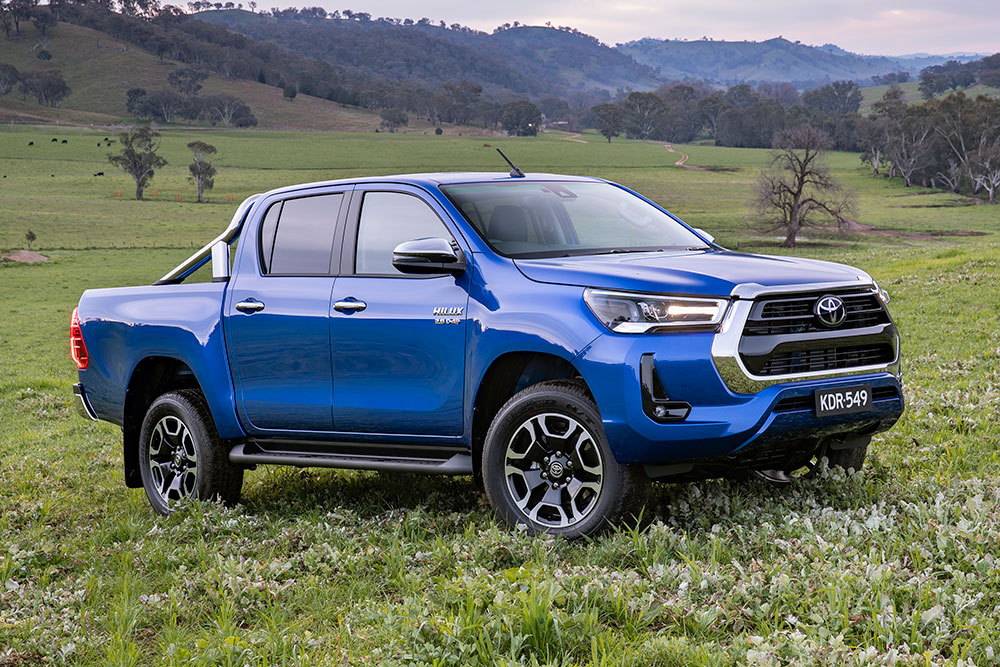Queensland, WA lead new car sales surge
Magic million beckons for Australia new car sales.

Interest rates might be rising and real estate cooling but strong November new car sales in the mining states of Queensland and Western Australia helped push Australia’s year-to-date sales to just under a million units, representing a 17.9% increase on the same month in 2021.
November 2022 new vehicle sales figures released by the FCAI, the peak body for Australia’s automotive industry, showed a total of 95,080 vehicles were sold in November, bringing the year-to-date total to 993,509.
Sales across all states and territories were up with sales in Western Australia increasing by 36.5% to 9,668 vehicles, while Queensland was up 28.9% to 20,621.
New South Wales (29,545) and Victoria (25,534) remained the two biggest states by sales volume, although their percentage gains weren’t as high as the mining states.
Rental fleets also showed strong gains in November, up 36.3% to 6,599 vehicles sold nationally, as operators prepared for the first major holiday period since border restrictions eased.
“The automotive sector is continuing to recover from pandemic-related shutdowns, a global shortage of microprocessors and the general supply chain uncertainty we experienced over the last two years,” FCAI Chief Executive Tony Weber said.
“The industry will deliver the one millionth vehicle to the market in 2022 next week.
“While this is positive news, many customers are still facing extended wait times for their vehicle, with expected delivery dates for some models beyond 12 months.”
Sales of battery-electric, plug-in hybrid and hybrid vehicles also continued to rise with a total of 13,415 zero and low-emission cars sold in November.
These were made up of 4,457 battery-electric, 8,529 hybrid and 429 plug-in hybrid vehicles.
The FCAI noted the Federal Government was considering a three-pronged approach to further increase this uptake, including purchase incentives such as the Treasury Law Amendments Bill (Electric Vehicle Discount), increased fuel quality standards and an emissions target for the light vehicle sector.
“Purchase incentives for zero and low-emission vehicles, and increased fuel quality standards are both important levers in reducing CO2 emissions from Australia’s light vehicle fleet,” Mr Weber said.
“These need to be combined with a federally led emissions target for the light vehicle sector.
“One which is ambitious, yet achievable and is cognisant of vehicle price, model availability, battery supply and infrastructure requirements.”
Internal combustion-powered vehicles still made up most new vehicle sales, with the Toyota HiLux ute the country’s highest selling model at 5,440 sales, followed by its Ford rival the Ranger which achieved 5,073 sales.
The Toyota Corolla, which includes a hybrid option, was third with 3,732 sales, followed by MG’s ZS which is available with both petrol and electric powertrains on 3,051 sales.
Tesla’s Model Y medium SUV was the biggest selling electric vehicle for the month, it’s 1,805 sales securing 10th position on the sales ladder, just 39 units behind Kia’s Sportage.
Toyota retained comfortable market leadership for the month with a total of 20,107 vehicles sold, followed by Mazda (7,549), Ford (7,165), Kia (6,120) and Mitsubishi (5,559).
Find out why RACQ Car Insurance is made for Queenslanders
Related topics
Things to note
The information in this article has been prepared for general information purposes only and is not intended as legal advice or specific advice to any particular person. Any advice contained in the document is general advice, not intended as legal advice or professional advice and does not take into account any person’s particular circumstances. Before acting on anything based on this advice you should consider its appropriateness to you, having regard to your objectives and needs.
Insurance Products (excluding Travel Insurance) are issued by RACQ Insurance Limited ABN 50 009 704 152 (RACQI) and arranged by its agent, RACQ Distribution Services Pty Ltd (RDS) ABN 35 116 361 650, AFSL 567130 and RDS' authorised representatives (including RACQ Operations Pty Ltd ABN 80 009 663 414, AR No. 234978 (RACQO). Conditions, limits and exclusions apply. RDS and RACQO are in the RACQ group of companies. One of the companies in the RACQ group of companies has a minority shareholding in RACQI.
RDS and RACQO have not taken your personal objectives, circumstances or needs into account when preparing advice regarding insurance products and you will need to consider whether the advice is appropriate for you. Read the Product Disclosure Statement (PDS) and any applicable Supplementary PDS before making a purchase decision on this product. You can also access our Target Market Determinations on this website. RDS receives a commission from RACQI for the policies it arranges. RACQO receives fees paid for services it provides to RDS. Further details about remuneration are available on request prior to purchasing.
Banking and loan products issued by Members Banking Group Limited ABN 83 087 651 054 AFSL/Australian credit licence 241195 trading as RACQ Bank. Terms, conditions, fees, charges and lending policies apply. This is general advice only and may not be right for you. This information does not take your personal objectives, circumstances or needs into account. Read the disclosure documents for your selected product or service, including the Financial Services Guide and the Terms and Conditions, and consider if appropriate for you before deciding.
Except for RACQ Bank, any RACQ entity referred to on this page is not an authorised deposit-taking institution for the purposes of the Banking Act 1959 (Cth). That entity’s obligations do not represent deposits or other liabilities of RACQ Bank. RACQ Bank does not guarantee or otherwise provide assurance in respect of the obligations of that entity, unless noted otherwise.
RACQ Bank subscribes to the Customer Owned Banking Code of Practice which establishes higher standards than the law requires. The Code reflects modern consumer expectations and developments in approaches to issues such as consumer vulnerability, guarantors, and supporting customers through financial hardship. Please read our Customer Owned Banking Code of Practice page for more information.
RACQ Operations Pty Ltd (ABN 80 009 663 414 AR 000234978) and Members Travel Group Pty Ltd (ABN 45 144 538 803 AR 000432492) are acting as an Authorised Representative of the issuer of the insurance, Tokio Marine & Nichido Fire Insurance Co., Ltd. (ABN 80 000 438 291 AFSL 246 548). Any advice set out above is general in nature only, and does not take into account your objectives, financial situation or needs. Before purchasing any travel products, please consider the RACQ Travel Insurance Product Disclosure Statement (PDS) and the Target Market Determinations (TMDs) that apply to these products. Whilst the PDS outlines the Terms and Conditions of these products, the TMDs outline the intended class of customers that comprise the target market for these travel products. This will allow you to consider which products best suit your objectives, financial situation and needs and consider the products appropriateness to your personal circumstances. TMDs also outline matters involving the distribution and the review of these products. The PDS, Supplementary PDS and TMDs for each travel product can be found here.
